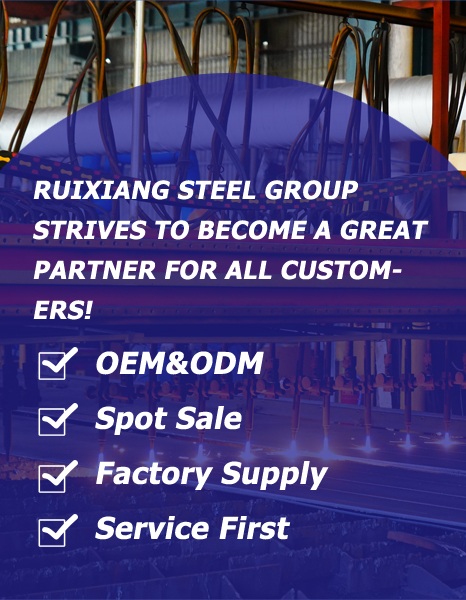Interpreting Load Tables for Galvanized Steel Grating in Industrial Platforms
 Click:224Edit: Admin
Click:224Edit: Admin Time:2025-10-04 16:36:00
Time:2025-10-04 16:36:00
Interpreting Load Tables for Galvanized Steel Grating in Industrial Platforms
Selecting the appropriate galvanized steel grating for industrial platforms requires a thorough understanding of load tables - the engineering documents that specify weight-bearing capacities under various conditions. These tables provide critical data for engineers, architects, and project managers to ensure safety, compliance, and optimal performance in industrial settings. For companies like Ruixiang Steel Group, providing comprehensive load table guidance helps clients make informed decisions for their specific applications.
The Anatomy of a Load Table
Load tables for galvanized steel grating typically contain several key parameters that determine performance characteristics. Understanding these components is essential for proper interpretation:
Safe load capacity: The maximum weight the grating can support under specific conditions
Deflection limits: The maximum allowable bending under load, typically expressed as a fraction of the span (e.g., 1/200 of the span)
Span measurements: The unsupported distance between structural supports
Grating specifications: Including bearing bar size, spacing, and grating type
These parameters interact to define the safety and performance boundaries for galvanized steel grating in various industrial applications.
Key Parameters in Load Table Interpretation
Bar Size and Spacing Configuration
The configuration of bearing bars directly impacts load capacity. Industry standards use specific designation systems such as G303/30/100 where:
"G303" indicates the load rating and bar type
"30" represents the bearing bar spacing in millimeters
"100" denotes the cross-bar spacing in millimeters
Closer bearing bar spacing generally increases load capacity but also adds weight and cost. For walking platforms, common configurations include 253, 255, 303, 323, and 325 series, while vehicular traffic typically requires 404, 405, 505, or higher capacity designs .
Material Properties and Impact on Performance
The base material significantly influences grating performance:
Q235 carbon steel: Offers yield strength ≥235MPa and tensile strength of 375-500MPa
Stainless steel alternatives: Provide enhanced corrosion resistance for harsh environments
Galvanized coatings: Typically ≥80μm zinc thickness provides corrosion protection for up to 20 years in demanding environments
These material properties form the foundation of the load values presented in engineering tables.
Understanding Deflection Limitations
Deflection criteria ensure both safety and usability:
Comfort criteria: For pedestrian comfort, deflection is often limited to 4mm under 4kN/m² load
Structural criteria: For structural integrity, maximum deflection is typically limited to 1/200 of the span
Absolute limits: Most standards specify absolute maximum deflection not exceeding 10mm regardless of span
These limitations prevent excessive movement that could compromise safety or user comfort.
Application-Specific Load Considerations
Pedestrian vs. Vehicular Loading
Different applications demand distinct load table interpretations:
Walkways and platforms: Typically designed for 3kN/m² (approximately 306kg/m²) uniform load
Stair treads: Must support 3.0 kN/m² minimum for single-person passage
Vehicular areas: Require significantly higher capacities, with parking structures needing at least 404 series grating
Heavy industrial zones: May utilize 505, 605, or 808 series for exceptional load requirements
Environmental and Dynamic Factors
Load tables typically present static values, but real-world applications require additional considerations:
Impact factors: Dynamic loads from moving vehicles or falling objects necessitate safety factors
Corrosion allowances: In chemical plants or marine environments, material loss over time must be anticipated
Fatigue considerations: Cyclic loading in industrial settings reduces effective capacity over time
Temperature effects: Both high-temperature and cryogenic applications affect material performance
International Standards and Compliance
Load tables vary based on different international standards:
Chinese standards (YB/T4001-2019): Specify requirements for steel grating materials and load capacities
American standards (NAAMM MBG): Provide comprehensive guidelines for metal bar grating design
European standards (EN ISO 14122-3): Emphasize dynamic factors and safety margins
Understanding these regional differences is crucial for international projects and compliance.
Practical Application: A Case Study
Consider a industrial maintenance platform requiring galvanized steel grating:
Load assessment: Determine both uniform (personnel, equipment) and concentrated (maintenance tools) loads
Span calculation: Measure unsupported distance between platform supports
Grating selection: Choose appropriate series (e.g., G325/30/100) based on load table data
Deflection verification: Confirm anticipated deflection falls within permissible limits
Safety factor application: Incorporate appropriate margins for dynamic loading
This systematic approach ensures safe, code-compliant grating selection.
Ruixiang Steel Group's Technical Support
At Ruixiang Steel Group, we recognize that proper interpretation of load tables requires both technical knowledge and practical experience. Our engineering team provides comprehensive support to help clients:
Select optimal grating specifications for specific applications
Interpret complex load table data in the context of unique project requirements
Balance performance needs with budget constraints
Ensure compliance with relevant international standards
Address special considerations such as corrosive environments or extreme temperatures
By combining high-quality galvanized steel grating products with expert technical guidance, we help clients achieve safe, efficient, and cost-effective industrial platform solutions.
Conclusion
Interpreting load tables for galvanized steel grating requires understanding the relationship between material properties, structural configuration, and application requirements. By carefully analyzing these factors and applying appropriate safety margins, engineers can specify grating solutions that ensure long-term safety and performance in industrial environments. As industry standards evolve and new materials emerge, continued education in load table interpretation remains essential for infrastructure safety.
 Click:224Edit: Admin
Click:224Edit: Admin Time:2025-10-04 16:36:00
Time:2025-10-04 16:36:00

